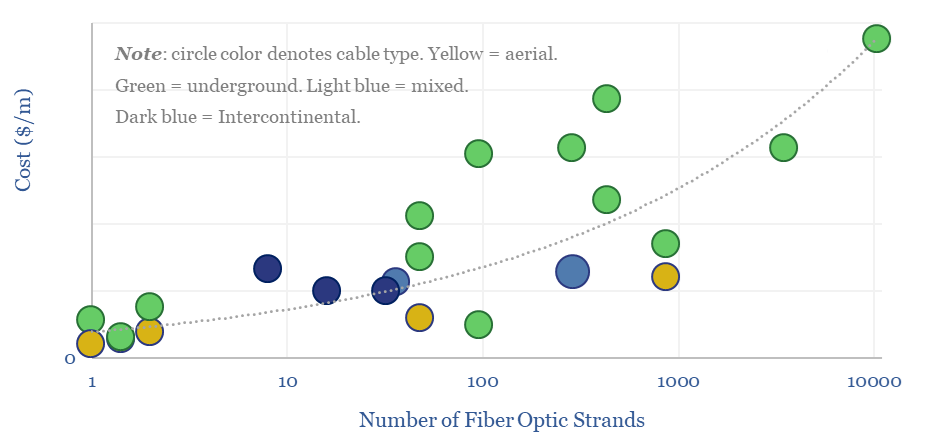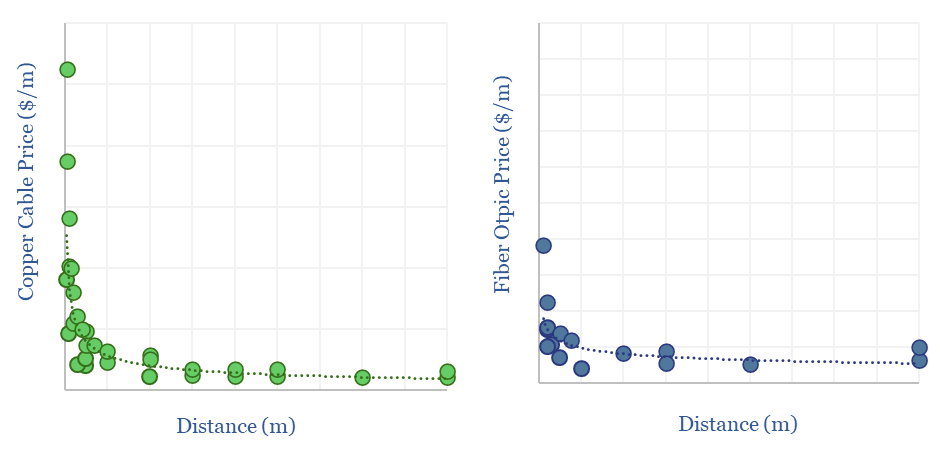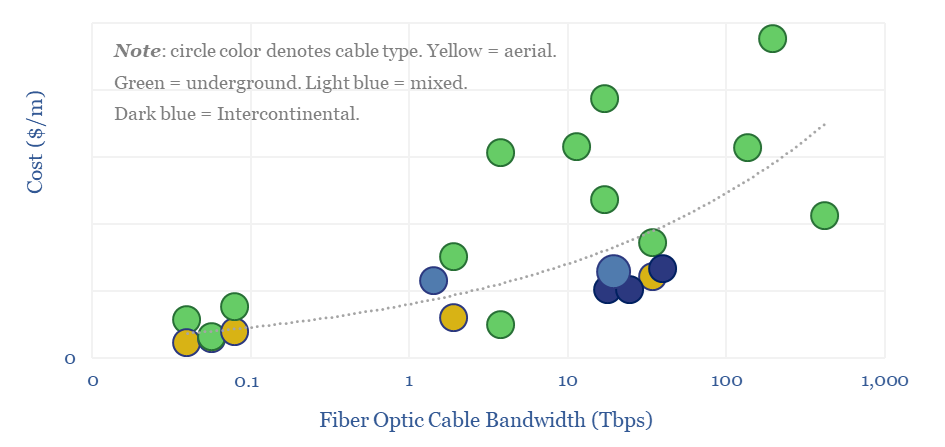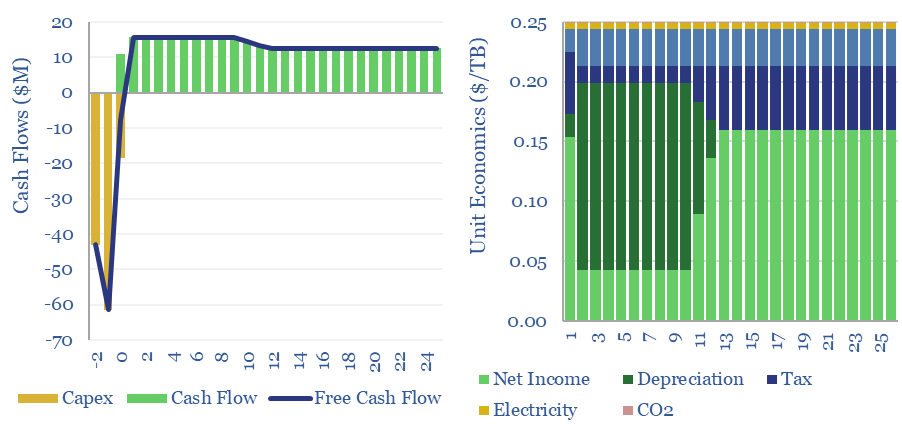The costs of fiber optic data transmission run at $0.25/TB per 1,000km in order to earn a 10% IRR on constructing a link with $120 per meter capex costs. Capex is 85% of the total cost. This data fiber breaks down the costs of data transmission from first principles, across capex, utilization, electricity and maintenance.
This model captures the costs of transmitting data across fiber optic cables, with a base case of $0.25/TB to earn a 10% IRR per 1,000km of data transmission. For an overview, please see our data-file into the energy use of fiber optic cables.
The economics of fiber optic cables are sensitive to cable length, utilization, and especially capex costs, which comprise 85% of the total costs, and are estimated in the data-file by tabulating details on 25 past fiber optics projects and their fiber counts (chart below).

The fiber running to an individual household might have 1-2 fiber optic strands, while a data-center interconnection (DCI) between two hyperscale facilities can have several thousand fibers.
Generally, each 10x increase in the number of fiber optic strands per cable only doubles the cost. A key reason is that 60-80% of total costs are construction, which do not change materially for higher-capacity cables.
Other factors that impact the capex costs of fiber optic cables: underground cables cost around 2-3x aerial cables. Undergrounding costs are also higher in rockier soil types and in urban environments. There are some nice cost breakdowns in the Capex_costs tab of the model, and in the backup tabs, compiling cost in $/m for fiber vs copper.

Capex costs per Tbps of bandwidth can also be estimated, with a formula linking capex costs ($/m) to the bit rate (Trillion bits of data transfer capacity per second, Tbps). Some intercontinental fiber links quote a specific bandwidth in Tbps, helped by amazing multiplexing. For others, we can estimate the bandwidth from the fiber count.

Utilization rate is another variable that impacts the costs of fiber data transmission, which can be stress-tested in the model. Hurdle rate also matters. The energy consumption of fiber optic cables matters less, but is also included in the model.
